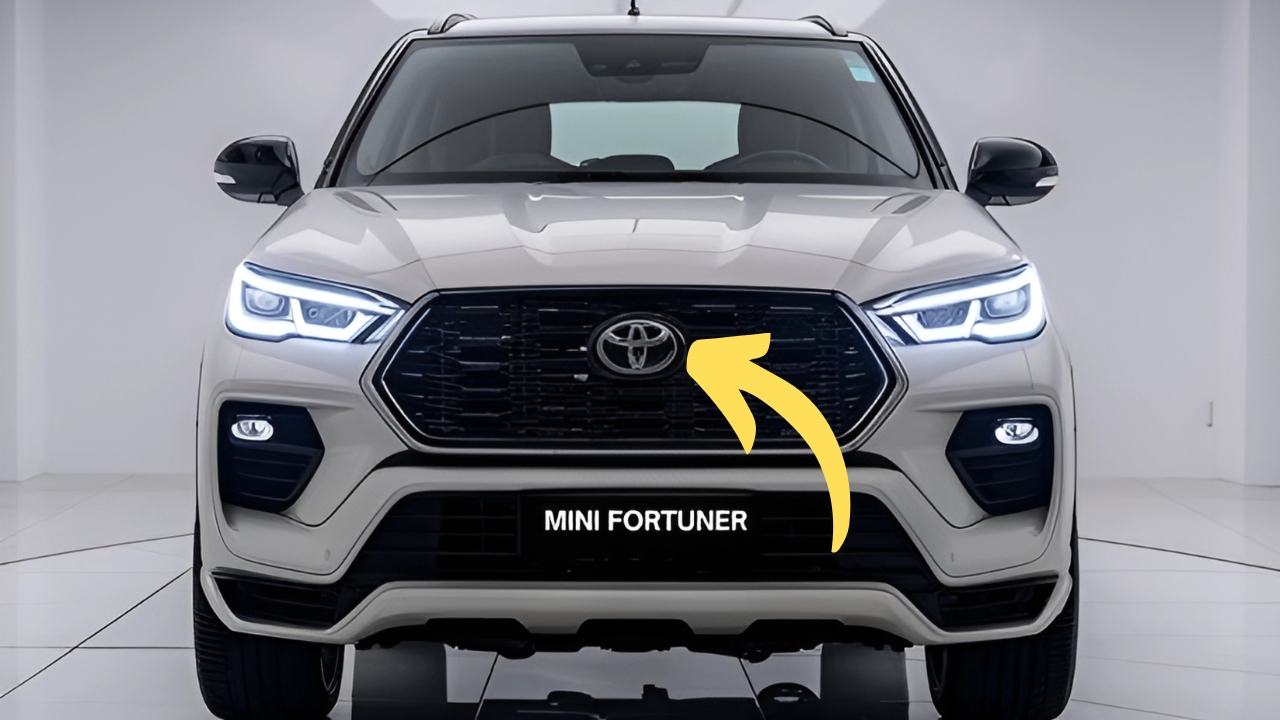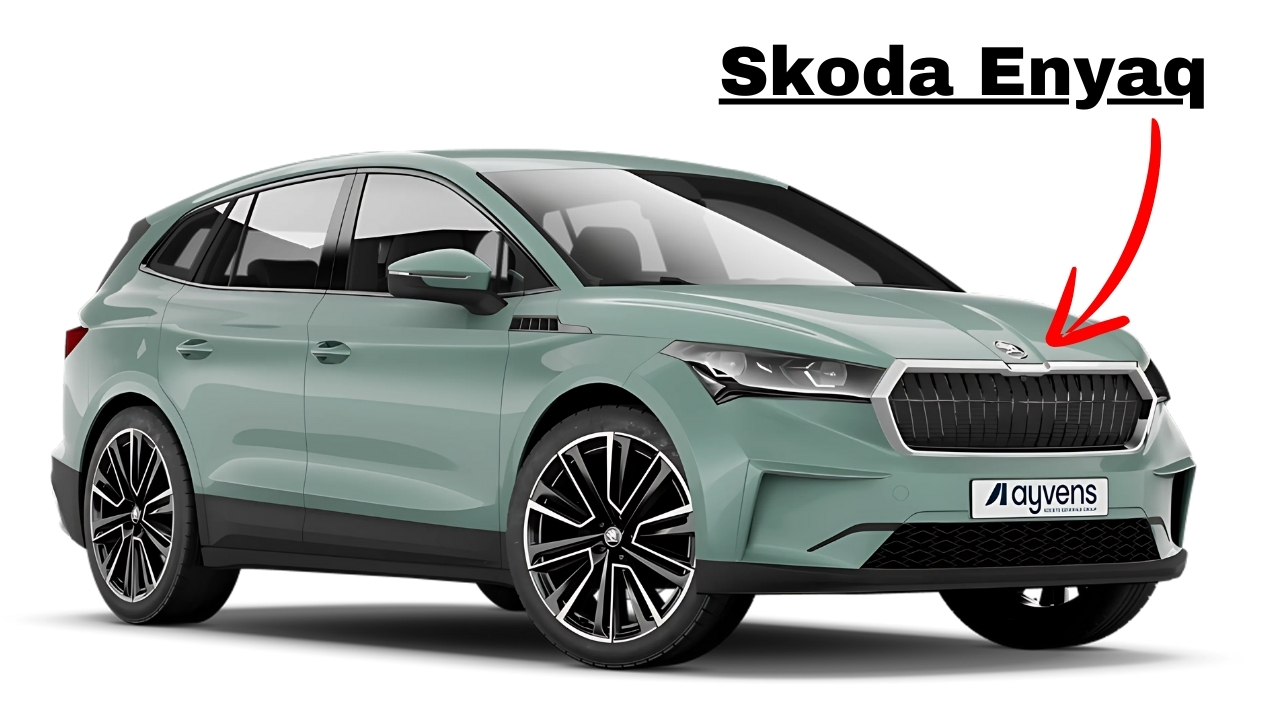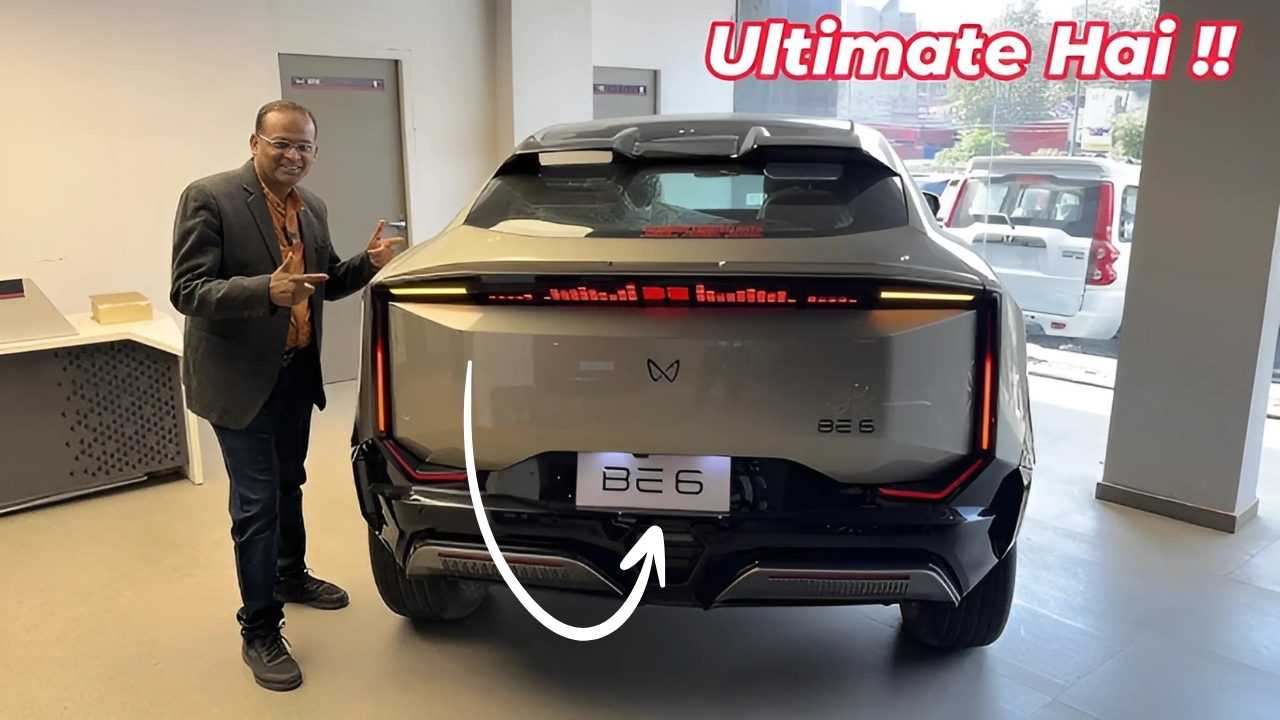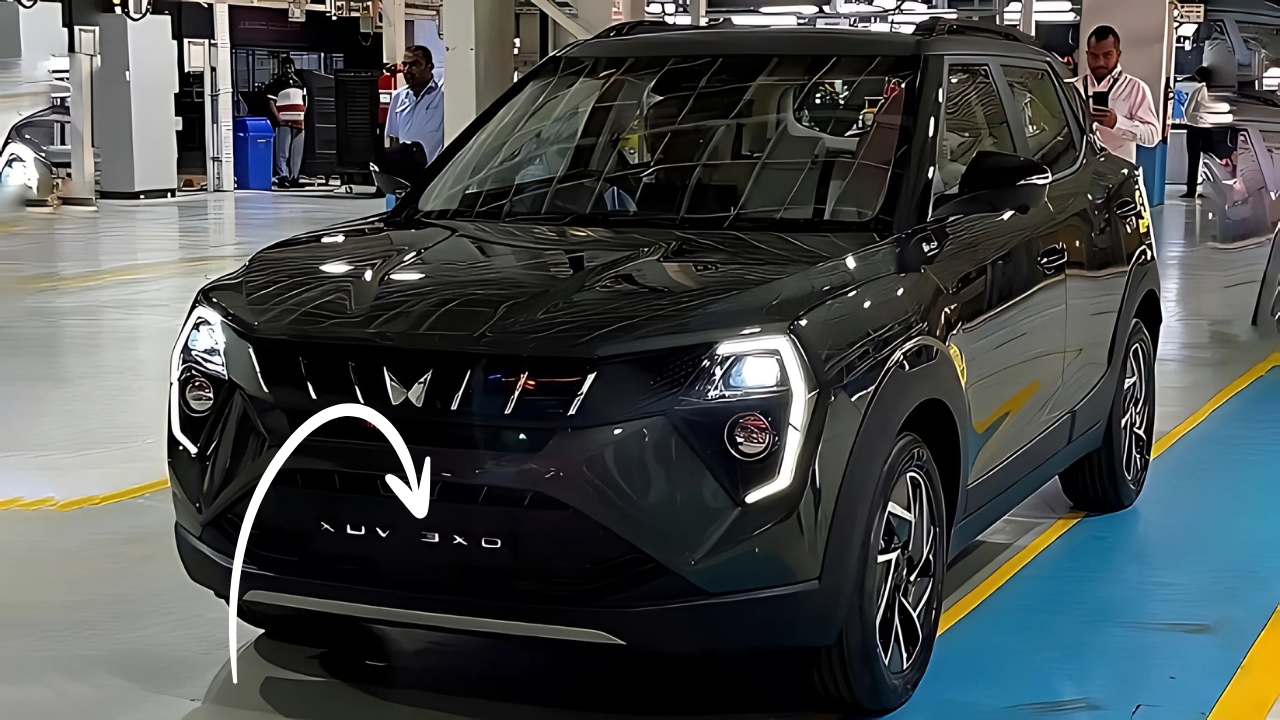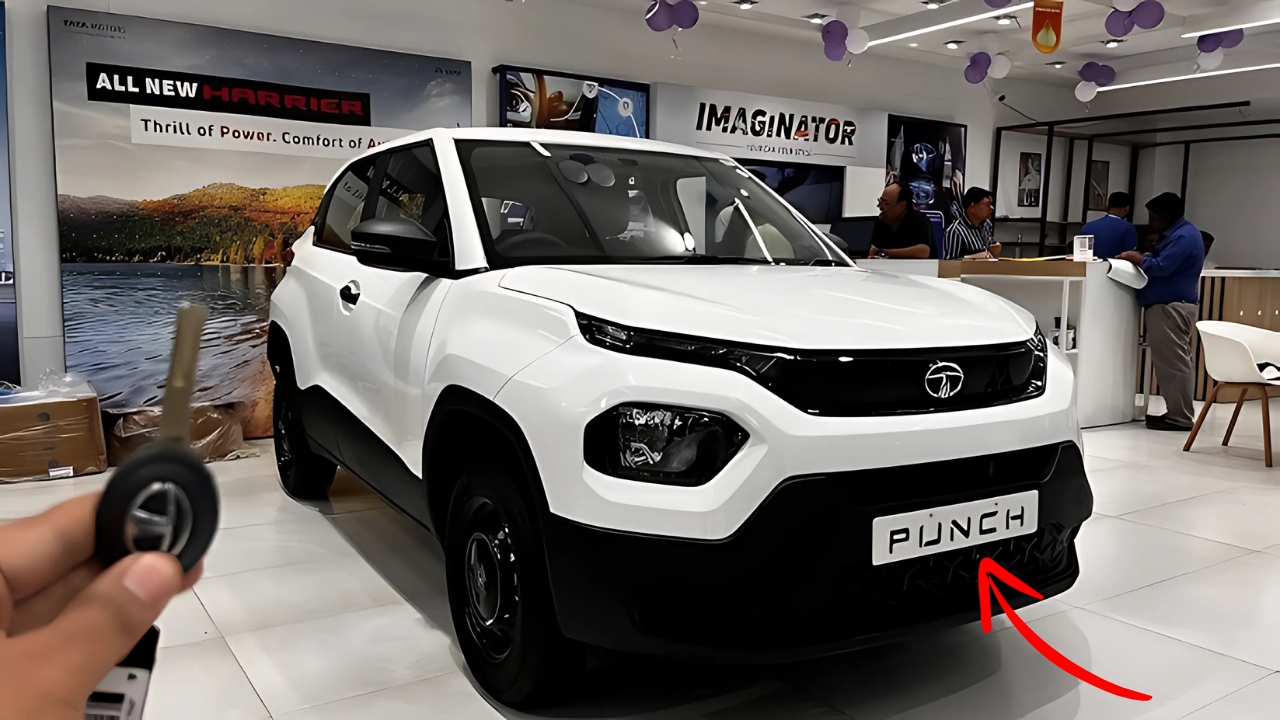The iconic shape of the Mahindra Bolero has become a staple on Indian roads for more than twenty years.
From the lively hustle of city life to the quietude of countryside trails, this resilient utility vehicle has solidified its reputation through steadfast reliability and a purposeful design.
Recently, Mahindra has taken a bold step by launching a thoroughly reimagined version of this classic model, aiming to strike a balance between honoring its utilitarian roots and catering to the demands of today’s consumers.
As you explore the new Bolero, it’s clear that Mahindra’s designers opted for a gentle evolution rather than a complete overhaul.
The signature boxy frame remains intact, preserving the model’s practical proportions that have characterized it since its launch.
Its upright posture, squared-off wheel arches, and commanding presence continue to resonate, particularly with loyal customers in rural and semi-urban areas.
“Our redesign process respected the Bolero’s significance to its owners,” shares Pratap Bose, the Chief Design Officer at Mahindra.
“Our findings indicated that buyers appreciate the Bolero’s straightforward, functional look. They weren’t looking for a trendy crossover; they wanted a refreshed version of the vehicle they trust.”
This philosophy appears in the careful enhancements made to the vehicle’s exterior. The front features a more striking six-slat grille, finished in dark chrome, accompanied by larger LED headlamps boasting C-shaped daytime running lights.
A redesigned bumper with more distinctive character lines and integrated fog lamps adds a contemporary touch while maintaining its rugged aesthetic.
On the sides, slightly flared wheel arches now house the larger 16-inch alloy wheels available on higher trims, while plastic cladding on the lower door panels not only enhances appearance but also protects against stone chips on rough roads.
The rear retains the convenient side-hinged tailgate, valued for its utility in tight spaces, now enhanced by vertically-oriented LED taillights that boost visibility.
One of the most striking updates is the new color palette, which introduces several premium metallic choices alongside the traditional shades of white and silver seen on existing Bolero models.
New options like Sunburst Orange and Napoli Black signal Mahindra’s intention to attract a younger audience looking for personalization in the Bolero’s rugged character.
Inside the new Bolero, the merger of tradition with modernity becomes more pronounced. The familiar layout remains—providing an upright seating position and excellent visibility—but has been extensively modernized.
The dashboard has a brand-new design with a more horizontal layout, focusing on better ergonomics.
At the center is a state-of-the-art 9-inch touchscreen infotainment system (standard on mid and higher trims) that supports wireless Apple CarPlay and Android Auto integration.
Physical climate control buttons are still present, recognizing that touchscreens may not always work efficiently in the rough, dusty conditions many Boleros face.
Quality has visibly improved, with soft-touch materials at key contact points and a more accurate fit across the panels.
The standard fabric upholstery has received enhancements with sturdier fabrics and stain-resistant finishes, crucial for a vehicle often utilized in agricultural environments.
Higher trims offer a leatherette choice that adds a touch of luxury while remaining simple to clean.
Flexibility is a continued priority in the seating arrangement. The standard seven-seater layout now features forward-facing seats in the third row instead of the previous side-facing jump seats, a nod to evolving safety standards.
For commercial use, a nine-seater model with side-facing rear benches is still available in selected markets.
“The interior design reflects our understanding that Bolero owners utilize their vehicles differently than conventional SUV buyers,” points out Rajesh Jejurikar, Mahindra’s Executive Director for Auto and Farm Sectors.
“These vehicles often serve dual purposes: family transport during the week and workhorses on weekends. We’ve crafted the interior to meet this varied need effectively.”
This adaptability is showcased in features like washable rubber floor mats, numerous 12V power outlets throughout the cabin, under-seat storage compartments, and roof-mounted handles that assist passengers when entering and exiting on uneven terrain.
The cargo area is equipped with tie-down points and a robust lining material that can hold up against heavy and frequently dirty loads.
Under the hood, the new Bolero gets a substantial technical upgrade. Its reliable mHawk D75 1.5-liter diesel engine has undergone significant revisions to comply with BS6 Phase 2 emissions standards while enhancing refinement and efficiency.
While the output remains modest—100 horsepower and 260 Nm of torque—the power delivery has been specifically tuned for low-end torque, which Bolero drivers appreciate for off-roading and transporting heavy loads.
This engine is paired with an updated six-speed manual transmission, replacing the old five-speed setup, boosting highway efficiency and reducing noise during travel.
For the first time, Mahindra is also offering an automated manual transmission (AMT) option on higher trims, acknowledging the increasing preference for two-pedal driving among traditional utility vehicle users.
The chassis retains a robust body-on-frame build, but extensive reinforcements and the clever use of high-strength steel have led to improved torsional rigidity and reduced weight.
The suspension system strikes a balance between durability and comfort—featuring independent front suspension with torsion bars and a rear live axle with leaf springs—but recalibrated dampers and better bushings have alleviated harshness on rough surfaces.
Four-wheel drive remains an available option across all variants, utilizing a straightforward, mechanical part-time system with a manual transfer case. This reliable engineering has proven effective in tough conditions and is easy to service, even in remote areas.
Fuel efficiency, crucial for the target market, has seen an improvement of around 12% according to Mahindra’s tests, with the new model delivering about 17.5 km/l under standard testing conditions. This enhancement significantly affects the vehicle’s operational costs for private and commercial users alike.
The technology features in the new Bolero showcase careful modernization, emphasizing practical enhancements over fads.
The mentioned infotainment system supports connected car features via Mahindra’s AdrenoX platform, allowing users to monitor vehicle health, utilize geofencing capabilities beneficial to fleet managers, and receive over-the-air updates for select vehicle systems.
Safety technologies have also received great attention, featuring six airbags on higher trims (with dual front airbags being standard) alongside electronic stability control, hill-hold assist, and a rear parking camera with dynamic guidelines.
These advancements fulfill regulatory standards while meeting evolving consumer expectations for safety features.
Interestingly, the new Bolero does not include some of the cutting-edge driver assistance systems seen in urban-centric SUVs, acknowledging that the complexity and upkeep of such technologies might pose challenges in the Bolero’s typical use cases.
Instead, Mahindra is focusing on robust and dependable tech solutions designed to endure harsh environments.
The electrical design has been fortified to guard against dust and moisture, while critical components have redundancies to preserve essential functions even if parts of the system fail.
“We prioritize reliability and serviceability in our technology integration,” elaborates Velusamy R, Chief of Global Product Development at Mahindra.
“Our customers rely on their vehicles to support their livelihoods. We’ve made sure that every new addition is easy to diagnose and repair, even in areas with limited technical resources.”
The new Bolero starts at a broader price range compared to its predecessor, reflecting Mahindra’s strategy to retain core customers while bringing in new clients who might typically consider more urban-oriented SUVs.
The base B2 variant ensures affordability for commercial and rural buyers with simple specifications and a focus on durability, while the top-tier B6 Luxury trim offers a level of refinement and features previously unmatched.
“The Bolero brand carries substantial value across India,” comments automotive analyst Hormazd Sorabjee.
“With this new generation, Mahindra is leveraging that value to broaden the vehicle’s appeal while ensuring it doesn’t alienate the faithful customer base that has contributed to its longstanding success. It’s a delicate balance, but early impressions suggest they’ve mostly achieved it.”
This broader positioning places the new Bolero not just against traditional competitors like the Tata Sumo Gold and Force Gurkha, but also with lifestyle-driven options such as Mahindra’s own Thar and the lower-end variants of compact SUVs from Hyundai, Kia, and others.
Early market reactions indicate this strategy is gaining traction, with pre-bookings surpassing Mahindra’s expectations by nearly 30%, especially strong in tier-2 and tier-3 cities, where buyers may have previously opted for urban-centric alternatives.
Understanding that the ownership experience extends beyond the vehicle alone, Mahindra has enriched the support infrastructure surrounding the new Bolero.
The service network has expanded to over 1,500 locations nationwide, focusing on rural areas where access to authorized service has been scarce.
Service intervals have also been lengthened to 10,000 kilometers (up from the previous 5,000), lowering maintenance costs and time spent off the road.
Mahindra has debuted a mobile service program, bringing technicians directly to owners in remote regions—a huge convenience for agricultural users during busy seasons when transporting vehicles to service centers isn’t feasible.
The warranty period has been stretched to 3 years/100,000 kilometers standard, with an option for extending it to 5 years/150,000 kilometers—coverage that underscores Mahindra’s confidence in the new vehicle’s durability while addressing concerns over the reliability of its latest tech features.
“Bolero customers have different expectations regarding their ownership experience compared to traditional passenger vehicle buyers,” notes Nalinikanth Gollagunta, CEO of Mahindra’s Farm Equipment Sector.
“Many operate miles away from urban centers and cannot tolerate lengthy downtime. Our broader service network and mobile support options reflect these realities.”
Beyond mere technical specifications and features, the new Bolero enters a market where its predecessor has evolved into a cultural icon, particularly in rural parts of India.
Mahindra’s marketing acknowledges this legacy while also seeking to craft new narratives for the Bolero.
The launch campaign, “Naya Bolero, Wohi Vishwas” (New Bolero, Same Trust), speaks directly to the challenge of finding balance between innovation and tradition.
Ads across television and digital platforms feature multigenerational families transitioning from older models to the new one, emphasizing continuity as well as advancement.
“The Bolero is much more than just another SUV in our collection—it’s an institution,” explains Veejay Nakra, President of Mahindra’s Automotive Division.
“Customers don’t just acquire this vehicle; they form emotional and financial bonds with it. The new generation had to honor that relationship while driving meaningful progress.”
This bond resonates particularly in rural communities, where the Bolero often acts as communal transport during significant life events— weddings, religious observances, medical emergencies, or agricultural tasks.
Mahindra’s field research has uncovered numerous stories of Boleros becoming integral components of family lore across generations.
Small Fortuner: Respectful Reinvention of an Icon
The automotive industry is replete with examples of brands that missed the mark in evolving cherished models—either altering too little to stay pertinent or, conversely, transforming too much and losing their essence.
With the new Bolero, Mahindra seems to have navigated this challenge with a unique sensitivity to what makes this vehicle beloved among its diverse owner demographic.
By maintaining key qualities of simplicity, resilience, and utility while carefully incorporating modern demands for comfort, safety, and efficiency, Mahindra has crafted a vehicle that feels authentic to the Bolero legacy while embracing the realities of today’s automotive market.
As India’s mobility landscape races towards electrification and greater urbanization, the new Bolero stands proudly as a reminder that substantial innovation doesn’t always necessitate groundbreaking changes.
Sometimes, the most impressive achievement lies in understanding precisely what should evolve—and what aspects should remain steadfastly unchanged.
For the farmers, small business owners, and rural families who have upheld the Bolero as a cornerstone of Indian roads for over two decades, this thoughtful progression ensures that this trusted partner will continue to address their needs well into the future, even as those needs themselves mature.
